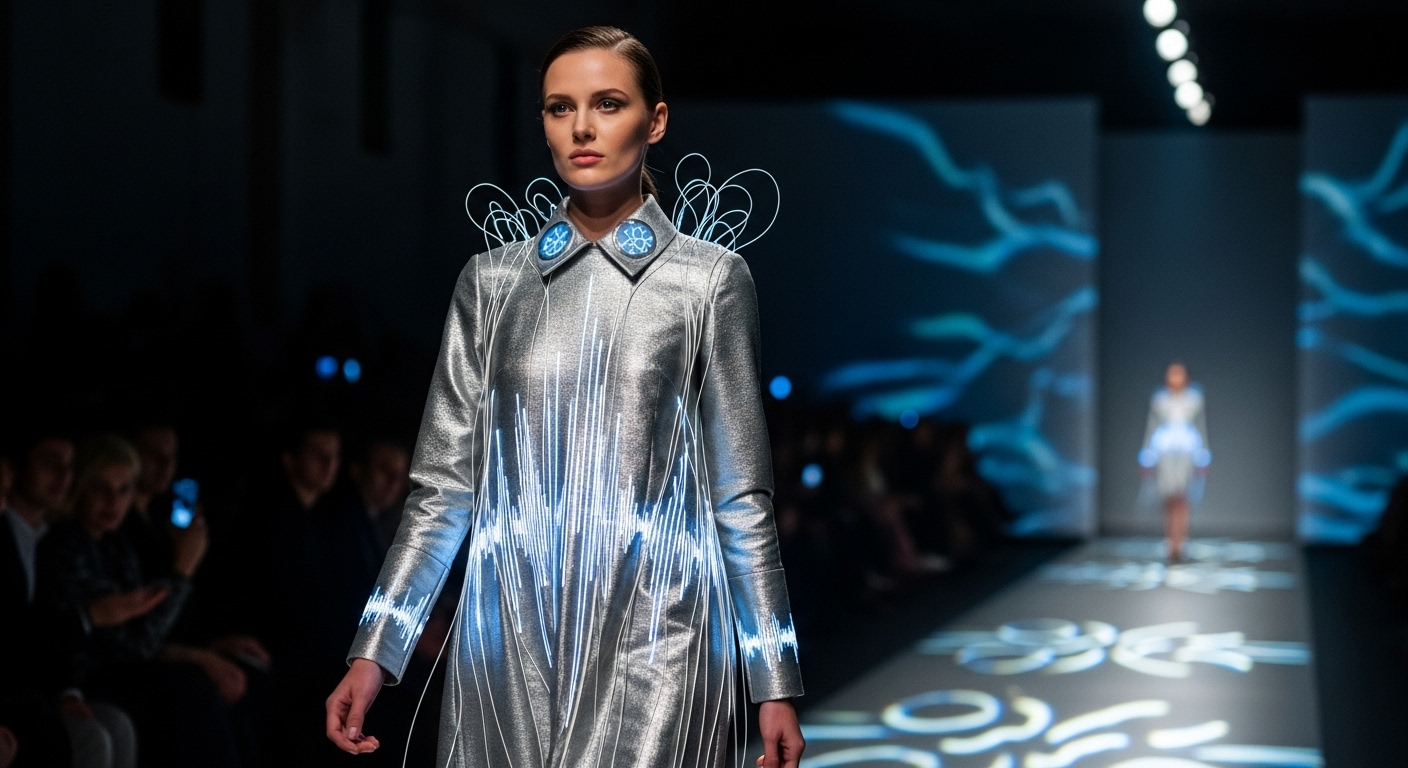Holographic Fashion Shows: The Future of Haute Couture
In a world where digital innovation meets haute couture, holographic fashion shows are redefining the runway experience. This cutting-edge technology is revolutionizing how designers present their collections, offering a blend of reality and virtual artistry that pushes the boundaries of traditional fashion presentations. As the industry evolves, these futuristic showcases are not just a passing trend but a glimpse into the future of fashion events.

Technology Behind the Spectacle
At the heart of holographic fashion shows lies a complex system of high-resolution projectors, motion capture technology, and specialized screens. These elements work in harmony to create three-dimensional images that appear to occupy physical space. Advanced software allows designers to manipulate these projections in real-time, adding an element of interactivity to the shows.
Advantages for Designers and Brands
Holographic runways offer numerous benefits to fashion houses. They provide unlimited creative freedom, allowing designers to showcase garments in impossible settings or with fantastical elements. The technology also reduces logistical costs associated with traditional shows, such as venue rental and model transportation. Additionally, these digital presentations can reach a global audience simultaneously, breaking geographical barriers.
Environmental Impact and Sustainability
One of the most significant advantages of holographic fashion shows is their potential for reducing the fashion industry’s carbon footprint. By eliminating the need for physical sets, lighting rigs, and international travel, these digital presentations align with growing consumer demand for sustainable practices in fashion. Some brands have even incorporated eco-friendly messaging into their holographic shows, further emphasizing their commitment to environmental consciousness.
Audience Engagement and Experience
Holographic fashion shows offer an unparalleled level of audience engagement. Viewers can experience the collection from multiple angles, sometimes even interacting with the virtual models or garments. This immersive experience extends beyond the event itself, with some brands offering augmented reality features that allow consumers to virtually try on pieces from the collection using their smartphones.
Challenges and Limitations
Despite their potential, holographic fashion shows face several challenges. The technology required is still expensive and complex, limiting its accessibility to smaller brands. There are also concerns about the loss of the tactile experience traditional runway shows provide, where buyers and press can examine garments up close. Critics argue that the digital nature of these shows might diminish the emotional connection between the audience and the collection.
Integration with E-commerce
Holographic fashion shows are increasingly being integrated with e-commerce platforms, creating a seamless transition from presentation to purchase. As viewers watch the show, they can often click on garments to learn more or add them to their virtual shopping carts. This direct link between runway and retail is revolutionizing the fashion industry’s sales model, potentially accelerating the trend towards see-now-buy-now collections.
The Future of Fashion Presentation
As technology continues to advance, the potential for holographic fashion shows seems limitless. Industry experts predict the integration of artificial intelligence to create personalized viewing experiences, and the use of blockchain technology to authenticate digital fashion items. Some visionaries even speculate about fully virtual fashion weeks, where attendees from around the world can participate through VR headsets.
Impact on Traditional Fashion Events
The rise of holographic fashion shows is forcing traditional fashion weeks to evolve. Many are now adopting hybrid models, combining physical shows with digital elements. This shift is democratizing fashion, making once-exclusive events more accessible to a broader audience. However, it also raises questions about the future role of fashion capitals like Paris, Milan, and New York in an increasingly digital landscape.
Ethical Considerations and Representation
Holographic technology opens up new avenues for representation in fashion. Designers can create diverse virtual models that represent a wide range of body types, ethnicities, and ages. However, this also raises ethical questions about the use of digital avatars and the potential erasure of real models from the industry. The fashion world is grappling with how to balance the benefits of technology with the importance of human representation.
In conclusion, holographic fashion shows represent a bold step into the future of haute couture presentation. As the technology matures and becomes more accessible, it has the potential to reshape not just how fashion is presented, but how it is created, consumed, and understood. While challenges remain, the innovative spirit driving this trend suggests that holographic runways will play an increasingly significant role in the evolving narrative of global fashion.





